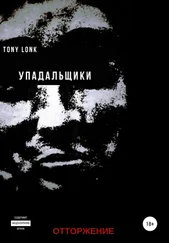The English capacity to plant and tend a Garden of Forgetting, fondly invoking the past while strenuously denying it, is unique. France’s otherwise comparable obsession with the nation’s heritage— le patrimoine —took a different form. In France, the fascination with identifying and preserving worthy objects and places from the national past went back many decades, beginning between the wars with agrarian exhibitions already nostalgic for the lost world of pre-1914 and accelerated by the Vichy regime’s efforts to replace the inconvenient urban present with an idealized rural past.
After the war, under the Fourth and Fifth Republics, the state poured considerable sums of money into national and regional preservation, accumulating a patrimoine culturel planned as a sort of tangible pedagogy: a frozen contemporary reminder (in the wake of a painful and turbulent century) of the country’s unique past. But by the last decades of the century France—the France of Presidents Mitterrand and Chirac—was changing beyond recognition. Now it was not the continuities with past glory—or past tragedy—that attracted comment, but rather the discontinuities. The past—the revolutionary past, the peasant past, the linguistic past, but above all the recent past, from Vichy to Algiers—offered little guidance for the future. Overtaken by demographic transformation and two generations of socio-geographic mobility, France’s once-seamless history seemed set to disappear from national memory altogether.
The anxiety of loss had two effects. One was an increase in the range of the official patrimoine , the publicly espoused body of monuments and artifacts stamped ‘heritage’ by the authority of the state. In 1988, at the behest of Mitterrand’s Culture Minister Jack Lang, the list of officially protected items in the patrimoine culturel of France—previously restricted to UNESCO-style heirlooms such as the Pont du Gard near Nîmes, or Philip the Bold’s ramparts at Aigues-Mortes—was dramatically enlarged.
It is revealing of the approach taken by Lang and his successors that among France’s new ‘heritage sites’ was the crumbling façade of the Hôtel du Nord on Paris’s Quai de Jemappes: an avowedly nostalgic homage to Marcel Carné’s 1938 film classic of that name. But Carné shot that movie entirely in a studio. So the preservation of a building (or the façade of a building) which never even appeared in the film could be seen—according to taste—either as a subtle French exercise in post-modern irony, or else as symptomatic of the unavoidably bogus nature of any memory when subjected thus to official taxidermy.
Mitterrand’s own distinctive contribution to the national patrimoine was not so much to preserve or classify it as to manufacture it in real time. No French ruler since Louis XIV has marked his reign with such a profusion of buildings and ceremonials. The fourteen years of Mitterrand’s presidency were marked not only by a steady accumulation of museums, memorials, solemn inaugurations, burials and reburials; but also by herculean efforts to secure the President’s own place in the nation’s heritage: from the appalling Grande Arche at La Défense in western Paris, through the graceful Pyramid at the Louvre and the aggressively modernist Opera House by the Bastille, to the controversial new National Library on the south bank of the Seine.
At the same time as Mitterrand was engaged in lapidary monumentalism, inscribing himself quite literally in the physical memory of the nation, a gnawing sense that the country was losing touch with its roots moved a prominent Parisian historian, Pierre Nora, to edit Les Lieux de mémoire , a three-part, seven-volume, 5,600-page collective work published over the course of the years 1984-1992 that sought to identify and explicate the sites and realms of France’s once-shared memory: the names and concepts, the places and people, the projects and symbols that are—or were—France, from cathedrals to gastronomy, from the soil to the language, from town planning to the map of France in the minds of Frenchmen.
No comparable publication has ever been conceived for any other nation, and it is hard to imagine how it could be. For Nora’s Lieux de Mémoire captures both the astonishing confidence of French collective identity—the uncontested assumption that eight hundred years of national history have bequeathed France a singularity and a common heritage that lend themselves to mnemonic representation in this manner—and the anxious sense, as the editor makes explicit in his introduction, that these commonplace collective symbols of a shared past were about to be lost forever.
This is nostalgia as Angst : the fear that one day—quite soon—the earth-colored information panels clustered along France’s magnificently engineered, impeccably landscaped autoroutes will cease to hold any meaning for the French themselves. What point would there be in alluding—first in symbols, then a little further along by name—to the cathedral at Reims; the amphitheatre at Nîmes; the vines of Clos de Vougeot; the Mont Ste Victoire or the battlefield of Verdun if the allusion meant nothing? What remains of France if the casual traveller encountering such names has lost touch with the memories they are meant to evoke and the feelings they are intended to stir?
The heritage industry in England suggests an obsession with the way things weren’t —the cultivation, as it were, of genuine nostalgia for a fake past. In contrast, the French fascination with its spiritual patrimoine has a certain cultural authenticity. ‘France’ has always represented itself in allegorical ways: witness the various depictions and incarnations of ‘Marianne’, the Republic. It was thus altogether appropriate that regret for the keys to a lost Frenchness was focused upon a formal body of symbols, whether physical or intellectual. These ‘are’ France. If they are misplaced or no longer shared, France cannot be itself—in the sense Charles de Gaulle meant when he declared that ‘France cannot be France without glory’.
These assumptions were shared by politicians, intellectuals and people of all political persuasions—which is why Les Lieux de mémoire was so successful, encapsulating for tens of thousands of readers an evanescent Frenchness already eluding them in daily French life. And it is therefore very revealing that whereas Christianity—Christian ideas, Christian buildings, practices and symbols—occupy a prominent place in Nora’s tomes, there is but one brief chapter on ‘Jews’—mostly as objects of assimilation, exclusion or persecution—and no entry at all on ‘Muslims’.
This was not an oversight. There was no assigned corner for Islam in the French memory palace and it would have run counter to the purpose of the undertaking to create one after the fact. But the omission nevertheless illustrated the trouble that France, like its neighbours, was going to have in accommodating the millions of new Europeans in its midst. Of the 105 members of the European Convention assigned the task of writing Europe’s constitution, none had a non-European background. Like the rest of the continent’s political élite, from Portugal to Poland, they represented above all white, Christian Europe.
Or, more precisely, formerly Christian Europe. Although the varieties of Christianity within Europe remained many—from Ukrainian Uniates to Welsh Methodists, from Trans-Carpathian Greek Catholics to Norwegian Lutherans—the number of Christians who actually practiced their faith continued to shrink. In Spain, which still boasted 900 convents and monasteries at the end of the twentieth century—60 percent of the world’s total—active faith was on the decline, correlating all too closely with isolation, old age and rural backwardness. In France, only one adult in seven acknowledged even attending church, and then on average just once a month. In Scandinavia and Britain the figures were even lower. Christianity was on the wane even in Poland, where the citizenry was increasingly deaf to the moral exhortations of the once-powerful Catholic hierarchy. By the turn of the century well over half of all Poles (and a much larger majority of those under thirty) favoured legalized abortions.
Читать дальше












